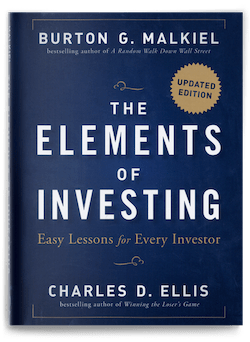Foreword
In The Elements of Investing, Charley Ellis and Burt Malkiel, two of the investment world’s greatest thinkers, combine their talents to produce a remarkable guide to personal finance. Having already written two of the finest books on financial markets, Ellis’s Winning the Loser’s Game and Malkiel’s A Random Walk Down Wall Street, why should the authors revisit the subject of their already classic volumes? The sad fact is that in the cacophony of advice for individual investors, few sane voices are raised. In writing The Elements of Investing, the authors provide an important service to the lay reader, honing their message to the bare essentials by heeding Albert Einstein’s dictum that “everything should be made as simple as possible, but not simpler.”
Investors have three tools to deploy in the portfolio management process – asset allocation, market timing, and security selection. Asset allocation involves setting long-term targets for each of the asset classes in which an investor invests. Market timing consists of short-term bets against the long-term asset allocation targets. Security selection deals with the construction of the asset classes that an investor chooses to employ.
Ellis and Malkiel correctly focus on asset allocation since asset allocation accounts for more than 100 percent of investor returns. How can it be that more than 100 percent of returns come from the asset allocation decision? Market timing and security selection involve significant costs in the form of management fees paid to outside advisors and commissions extracted by Wall Street brokers. Such costs ensure that investors will underperform by the totality of investment management costs, which represent transfers from investors to their agents. Hence, the expensive activities of market timing and security selection reduce the returns available for the community of investors and that is the reason asset allocation explains more than 100 percent of investor returns.
Ellis and Malkiel observe that investors consistently make perverse market timing decisions, chasing hot performers and dumping laggards. Study after study of mutual fund trading concludes that investors buy high and sell low, subtracting value with their timing decisions. Ellis and Malkiel sensibly advise investors to adopt a coherent long-term strategy and stick with it.




